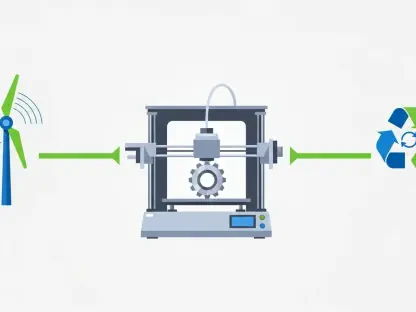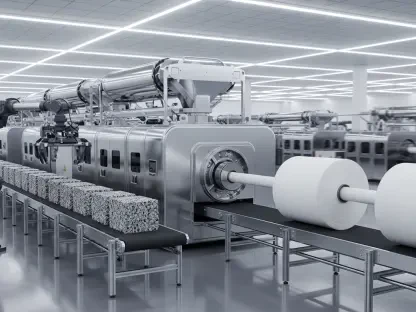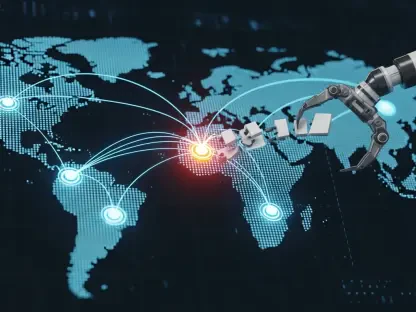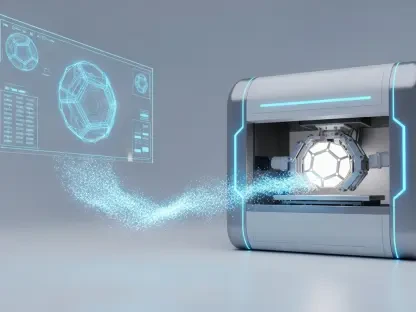Factory fires in the automotive manufacturing industry are an increasingly pressing concern. Data demonstrates a staggering 38% rise in supply chain disruptions due to fires, emphasizing how these incidents impair production and endanger worker safety. The compounding factors of labor shortages, regulatory setbacks, and operational changes without adequate risk measures have heightened these risks. This review delves into the various technological advancements designed to curb such fire hazards, highlighting their evolution, current capabilities, and potential future developments.
Introduction to Factory Fire Prevention Technologies
In the technologically advanced landscape of the automotive manufacturing sector, fire prevention technologies have emerged as a crucial component to ensure safety and operational efficiency. These systems are designed to go beyond traditional smoke and heat detectors, incorporating advanced sensors and monitors to anticipate and mitigate hazardous conditions before a fire can ignite. The combination of state-of-the-art detection systems and sophisticated monitoring instruments forms the backbone of contemporary fire prevention strategies.
Despite their relatively recent introduction, these technologies have quickly garnered significance in the automotive sector due to their ability to provide real-time alerts and insights into potential fire hazards. As factories evolve to incorporate smart technologies, integrating fire prevention systems within this network offers both immediate safety benefits and long-term operational stability. This evolution marks a pivotal shift in how industries approach safety, underscoring its relevance amidst shifting manufacturing priorities and workforce dynamics.
Key Features and Components of Fire Prevention Technologies
Advanced Detection Systems
Advanced detection systems are the linchpin of contemporary fire prevention strategies in manufacturing environments. These systems employ a variety of sensors to detect specific hazardous conditions, such as the presence of flammable gases, excessive heat, or abnormal changes in the environment indicative of a potential fire threat. By employing technologies like infrared, ultraviolet, and thermal detection, these systems provide early warnings that can prevent fires before they occur.
The performance and efficacy of these systems have been profoundly impactful. Not only do they facilitate faster response times, but they also significantly reduce false alarms. Furthermore, their integration within automated systems allows for seamless communication with other safety mechanisms, ensuring a swift containment response that can limit damage and improve overall safety outcomes.
Monitoring Instruments
Portable and inline monitoring instruments play an essential role in maintaining continuous oversight within manufacturing settings. These devices provide real-time data on specific variables that could pose fire risks, such as moisture levels in automotive paints and coatings or friction levels in mechanical components. Instruments like Kett’s friction testers and moisture meters are particularly valuable as they aid in pinpointing risky conditions before they escalate into fires.
In real-world applications, these monitoring tools have been instrumental in enhancing operator efficiency and optimizing safety protocols. By offering precision and adaptability, they empower factory workers to make informed decisions swiftly. Moreover, their portable nature allows for easy deployment across production lines, making them an integral component of any comprehensive fire prevention strategy.
Latest Developments in Fire Prevention
In recent years, the field of fire prevention technology has seen significant advancements and emerging trends that are reshaping its trajectory. Innovations such as AI-driven predictive analytics and Internet of Things (IoT) connectivity have been introduced to augment the capabilities of traditional detection systems. These advancements enable systems to not only detect potential fire hazards but also predict them, offering insights that can inform preventive strategies further ahead of any emergency.
Shifts in both consumer expectations and industry behavior have also pushed for greater transparency and accountability in manufacturing operations. This has led to technologies prioritizing precision and reliability, thereby catering to modern safety standards. As industries become more aware of these enhanced capabilities, there’s a growing emphasis on research and development aimed at refining these tools and exploring novel applications.
Real-World Applications and Implementations
Across various sectors, fire prevention technologies have found numerous applications, emphasizing their adaptability and usefulness. In the automotive industry, factories are utilizing these systems to maintain stringent safety controls on production lines, preventing costly interruptions and protecting personnel. Another domain actively deploying these technologies is the chemical industry, where the risks of combustion are particularly high.
One notable example includes the deployment in biotechnology labs where volatile substances are part of daily operations. Here, the use of advanced fire detection and monitoring systems helps ensure that even minute changes in environmental conditions are swiftly addressed, preventing potential hazards. This broad utility underscores the importance of integrating these technologies into diverse manufacturing environments to safeguard operations efficiently.
Challenges and Limitations
Despite their advancements, fire prevention technologies encounter a set of challenges and limitations. Technical hurdles include the integration of new systems within existing infrastructure. Factories, particularly those with outdated equipment, may find it difficult to incorporate advanced technologies seamlessly. Additionally, regulatory issues persist, particularly concerning compliance with evolving safety standards and achieving certifications that encourage adoption.
Market barriers also pose considerable challenges. The cost of deploying cutting-edge technologies can be prohibitive for some manufacturers, particularly small to mid-sized enterprises. Addressing these challenges involves ongoing development efforts that focus on scalability and cost-effectiveness, alongside policy reforms that simplify regulatory compliance.
Future Outlook and Potential Developments
The future of fire prevention technologies holds promising potential for further advancements and breakthroughs. With continued investment in AI and machine learning, these systems are expected to become even more predictive and intuitive. Improved data analytics capabilities are likely to offer deeper insights into risk management strategies, empowering manufacturers to anticipate hazards more effectively.
Furthermore, the trend toward automation and interconnected systems suggests an increasing role for these technologies within smart manufacturing environments. As industries transition to more integrated and responsive production lines, fire prevention technologies are poised to become a fundamental part of the operational landscape. The long-term impact of these advancements is expected to reshape industry standards for safety, offering not just improved fire prevention but also enhanced operational efficiency.
Conclusion and Overall Assessment
The review of factory fire prevention technologies highlighted their crucial role in addressing the varied challenges synonymous with modern manufacturing. These technologies have evolved to offer advanced detection and monitoring capabilities that significantly reduce fire risks, thereby improving safety standards across industries. The strategic integration of these technologies supports the overall productivity and reliability of manufacturing operations.
The potential for continued innovation in this field remains substantial, with promising future advancements on the horizon. As industries become more sophisticated, the demand for comprehensive fire prevention solutions will likely grow, leading to greater adoption and investment. These systems have proven essential in safeguarding manufacturing environments, a trend that seems set to continue as the industry prioritizes resilient and adaptable safety measures.









